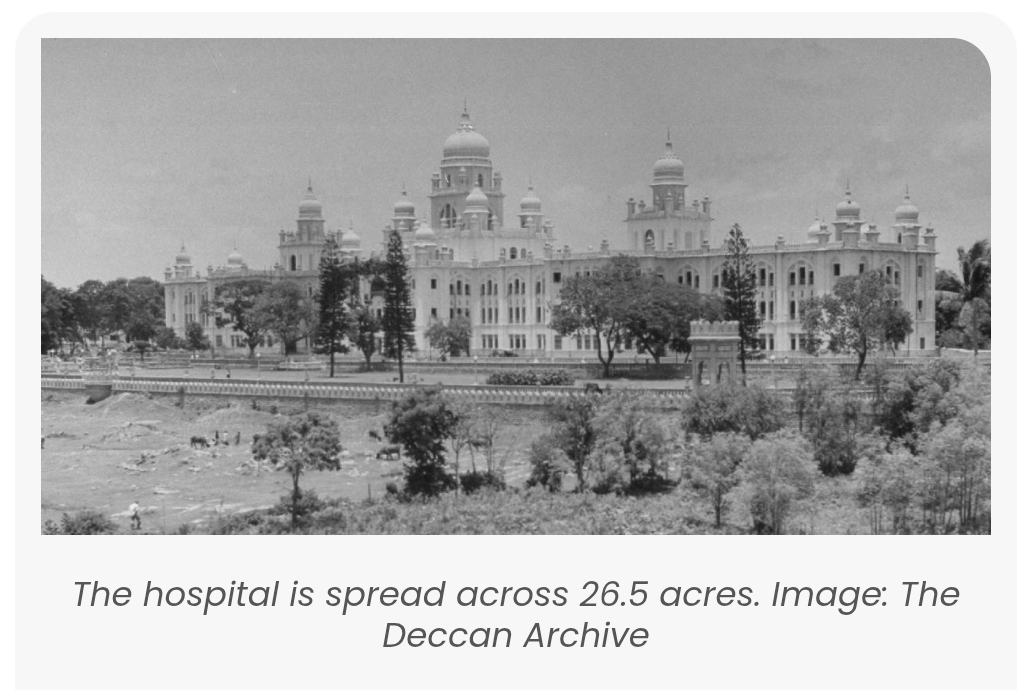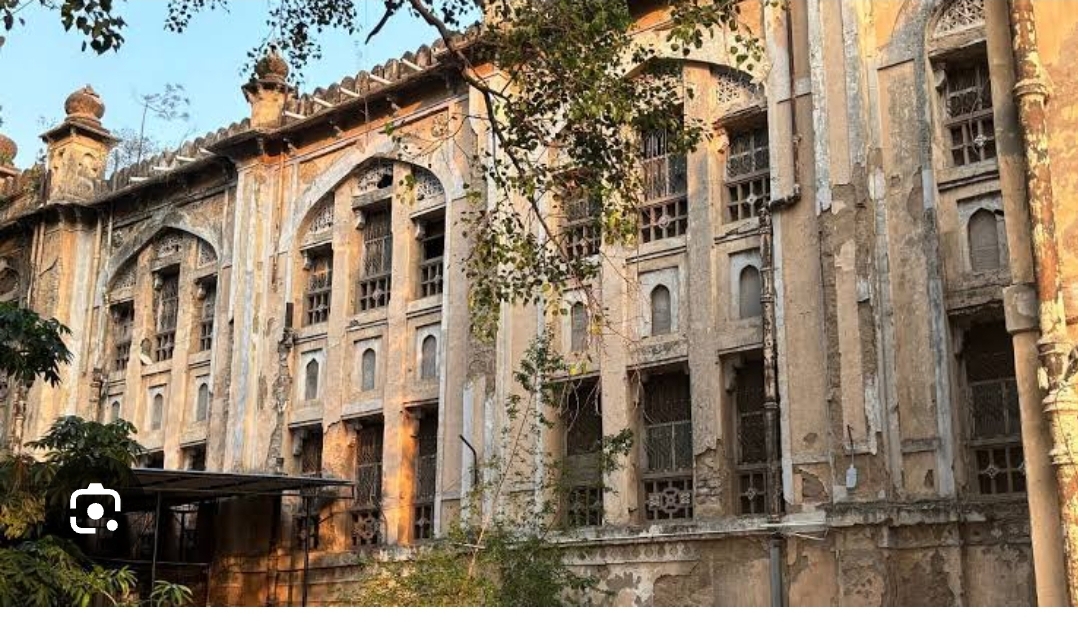The Osmania General Hospital
Founded in 1866: Initially established as Afzal Gunj Hospital during the rule of the 6th Nizam, Nawab Mir Mahboob Ali Pasha.
-
Renamed in 1910s: The hospital was later renamed Osmania General Hospital after Mir Osman Ali Khan, the 7th Nizam, who envisioned a modern medical facility for the public.
-
Inaugurated in 1925: The current building, known for its Indo-Saracenic architectural style, was completed and inaugurated in 1925 under the Nizam's reign.
1925 - interior view. Pic Credit - MIT Dome -
Designed by Vincent Esch: The iconic structure was designed by British architect Vincent Esch, also known for designing the Victoria Memorial in Kolkata.
Revisiting the conception and execution of Osmania Hospital:
Excerpted from Deccan Chronicle Article https://www.deccanchronicle.com/amp/nation/current-affairs/310723/osmania-general-hospital-the-journey-of-a-masterpiece-on-the-riverfro.html
"As per the plan, the buildings of the Hyderabad High Court and the City High School were developed on the south bank of the river. Among the buildings damaged due to the floods on the north bank was the Afzalgunj Hospital. It was repaired and resumed its services but in 1915 the need to develop a new Civil General Hospital was felt to meet the growing medical needs of people.
-
Free Public Healthcare: It was one of the first hospitals in India to offer free healthcare services to all, irrespective of caste, creed, or class.
-
Important During Epidemics: Played a critical role in treating plague, cholera, and tuberculosis outbreaks in the early 20th century.
-
Heritage Structure: The building is classified as a heritage structure, admired for its domes, arches, and Indo-Islamic architectural elements.
Current Situation:
-
Decline & Neglect: In recent decades, the hospital suffered from infrastructure decay, overcrowding, and lack of modernization despite its significance.
-
Current Redevelopment Plans: There is an ongoing debate and plan regarding the restoration or redevelopment of the structure, balancing heritage conservation and the need for modern medical facilities.
- Resources:
- Pictures:
- https://dome.mit.edu/handle/1721.3/20122
- https://dome.mit.edu/handle/1721.3/20268
- https://dome.mit.edu/handle/1721.3/22974
- https://dome.mit.edu/handle/1721.3/20029
Further Reading
https://www.deccanchronicle.com/amp/nation/current-affairs/310723/osmania-general-hospital-the-journey-of-a-masterpiece-on-the-riverfro.html
------
https://www.newindianexpress.com/cities/hyderabad/2024/Feb/08/the-legacy-of-osmania-general-hospital
HYDERABAD : The fusion of old and new elements both forms and trans-forms the skyline of this city. A monument caught in a debate between preserving the past and embracing the future is Osmania General Hospital. Originally established in 1866 as Afzalgunj Hospital, it relocated to its current site on the south bank of the Musi River in 1926. Since then, the hospital has borne witness to medical breakthroughs, tirelessly serving thousands of patients and training hundreds of doctors and nurses.
Among its significant milestones, Afzalgunj Hospital hosted one of the first chloroform trials in 1888 as part of the Hyderabad Chloroform Commission, sponsored by Nizam V, Mir Mahboob Ali Khan, and led by Dr Edward Lawrie.
The hospital also boasts the distinction of nurturing the world’s first female anaesthetist, Rupa Bai Furdoonji, who played a pivotal role in these commissions. The present site also housed Hyderabad Medical School, where Nobel laureate Sir Ronald Ross made the discovery of malaria.
Following the devastation caused by the 1908 Musi floods, the original structure was washed away. On the directive of Nizam VI, Mir Osman Ali Khan, the present building was erected, and designed by British architect Vincent Jerome Esch in Indo-Sarcenic style.
A majestic tamarind tree stands in front of the main heritage block, commemorated with a cement plaque recounting how it served as a lifeline during the floods as 150 individuals clung to its branches, escaping the deluge. Beneath its protective canopy lies a memorial grave, honouring the lives lost to the calamity.
Article excerpt.
----








Comments
Post a Comment